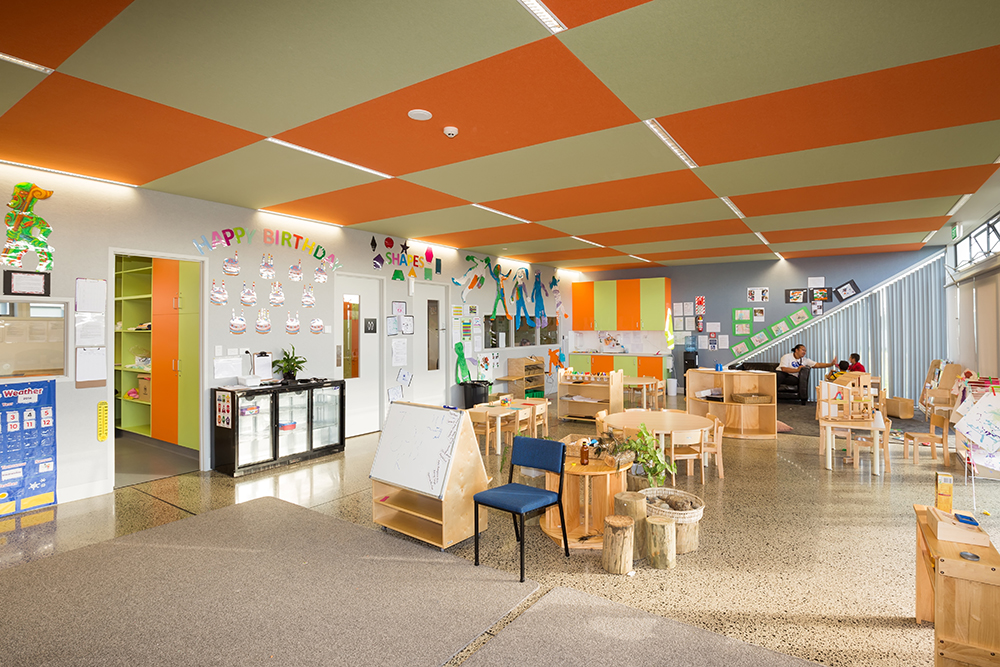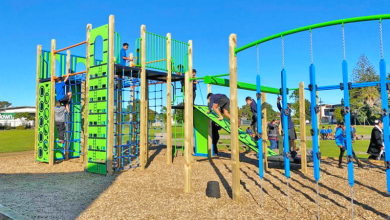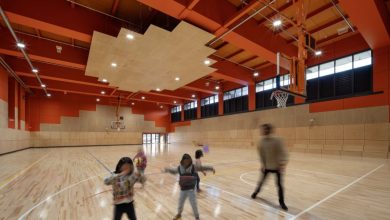How to treat the acoustics in existing classrooms

Classroom acoustics are a vital component of learning.
The ability to clearly hear and understand a teacher verbally communicating his or her lesson is crucial for students to be able to process the information presented.
Excessive levels of background noise and/or noise reverberation create auditory disturbances, which impact speech clarity and detract from the lesson at hand, resulting in poor classroom acoustics.
Background noise, also known as ambient or residual noise, comes from a range of internal and external sources such as chatter, noise in adjacent rooms, nearby traffic, etc. While low levels of background noise are tolerable, high levels can be significantly disruptive to student concentration. Research indicates that background noise levels in unoccupied New Zealand classrooms range from 28 – 60 dB (The Oticon Foundation in New Zealand). This exceeds the Ministry of Education’s current requirement that ambient noise levels in a flexible learning space or celluar (traditional) classroom should not exceed 35 – 45 dB.
Noise reverberation is defined as the time it takes for a noise to decay below the threshold of audibility. As the sound travels it reflects off hard surfaces and bounces around the space – the more reflective surfaces and the larger the space, the higher the reverberation levels. Achieving a good balance of reverberation is important as excessive reverberation can comprise speech intelligibility.
 Autex Cube panels direct stuck to ceiling provides acoustic absorption for Takanini Child Family Centre.
Autex Cube panels direct stuck to ceiling provides acoustic absorption for Takanini Child Family Centre.
Problems with poor classroom acoustics
According to the American Speech-Language-Hearing Association (n.d.) poor classroom acoustics can affect students’ speech understanding, attention, concentration, reading and spelling ability, behaviour in the classroom and academic achievement. Students that are learning in a second language or are afflicted by hearing impairments and/or learning disabilities are further disadvantaged by these acoustic barriers. Research conducted into classroom acoustics revealed that speech intelligibility rating is at 75 percent, indicating that on average, every fourth word is misheard (Seep, Benjamin., Glosemeyer, Robin., Hulce, Emily., Linn, Matt. Aytar, Pamela).
Teachers are also affected by poor classroom acoustics. Vocal strain – commonly resulting from speaking for long periods of time at elevated levels – is recognised as a serious occupational hazard for teachers. It is estimated that teachers verbally communicate approximately 60 percent of their workday. A survey on New Zealand teachers revealed that 71 percent found noise from within the classroom to be a problem and more than a third said they need to speak at a level that strains their voices (Oticon Foundation in New Zealand, 2002).
These figures indicate that poor classroom acoustics are prominent in New Zealand and can cause additional harm for teachers that can be fairly detrimental to their performance and job satisfaction. A study conducted on workplace injuries indicate that “teachers are 32 times more likely to have voice problems compared to similar occupations” (American Speech-Language-Hearing Association, n.d.).
Improving classroom acoustics
In order to improve classroom acoustics, it is important to consider acoustic performance and requirements from the start of the project. The architectural design of a space is an important starting point – the size, shape and surface finish all impact acoustic behaviour and therefore impact speech clarity. For example, large rooms with no acoustic treatment are prone to acoustic reflections, which increase reverberation times – this temporarily disrupts the desired signal and can also increase background noise levels (American Speech-Language-Hearing Association, n.d.).
Project managers must consider the range of learning activities that will take place within the classroom. For example, allocating space for large group activities at one end and quiet, individual learning activities to run concurrently at the other end. It is also important to assess any existing unsatisfactory acoustic characteristics. Excessive reverberation, for example, can be reduced by strategically installing absorptive acoustic panels on ceilings and walls. Another example may be that the teacher is finding it difficult to project their voice. Reducing internal background noise and excessive reverberation levels can be accomplished by minimising the volume of reflective surfaces with acoustic treatment.
 Autex Composition creates a vibrant acoustic pinboard in a retrofitted Whangaparoa Primary Classroom.
Autex Composition creates a vibrant acoustic pinboard in a retrofitted Whangaparoa Primary Classroom.
It is important to follow the standards set out in the Ministry of Education’s Designing Quality Learning Spaces document. When retrofitting a traditional cellular classroom, The Ministry of Education require that background noise levels should not exceed 35 – 45 dB and recommend “full ceiling coverage with a with a high performance absorptive product (minimum NRC* 0.85)”. It is also recommended that acoustic absorptive products are applied to every available wall space with a minimal equivalence of 20 percent of the absorption properties provided by the treated ceiling.
There are several options when considering acoustic treatment for the ceiling space such as installing acoustic ceiling tiles into a T grid or direct fix grid, direct fixing acoustic panels to the ceiling or suspending acoustic baffles. To reinforce the acoustic performance of the treated ceiling, wall options include 10-15mm thick acoustic pinboard or 50mm thick acoustic wall panel. The suitability of these options will vary from project to project and will ultimately be impacted by existing structural limitations, planned learning activities and existing acoustic characteristics. There are many acoustic products available for these applications. It is important to choose products that are of good quality, high performing, durable and safe for space users – if in doubt ask a professional or check product accreditations.
Effective acoustics are essential in all classrooms; understanding and planning for the acoustic requirements and existing acoustic problems will ensure the retrofitted classrooms will support learning activities. Classrooms are vital communication channels’ where essential social, cultural and academic skills are taught. Creating learning environments that foster clear acoustics are essential for speech clarity and should be the goal of all educational institutes. If you believe your classroom environment suffers from poor acoustics, contact an experienced acoustic professional or consult the Ministry of Education.
*Noise Reduction Coefficient refers to the rating of a materials sound absorption properties.









